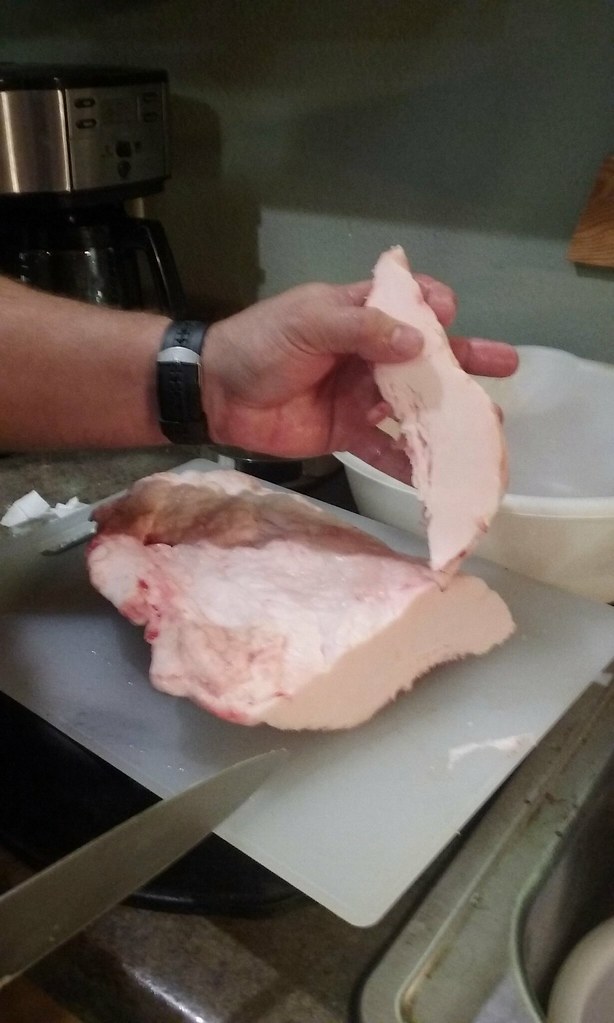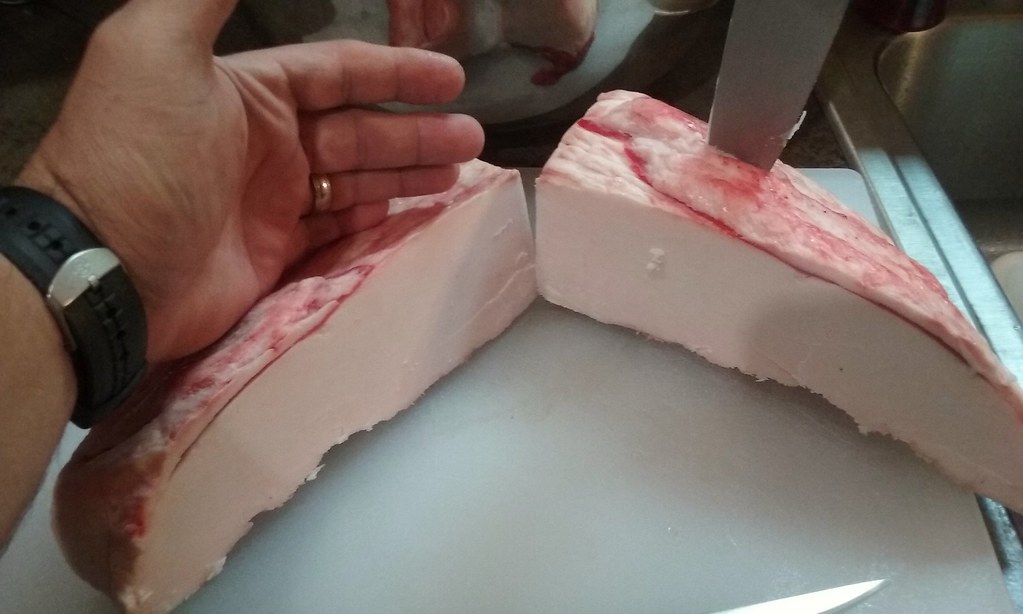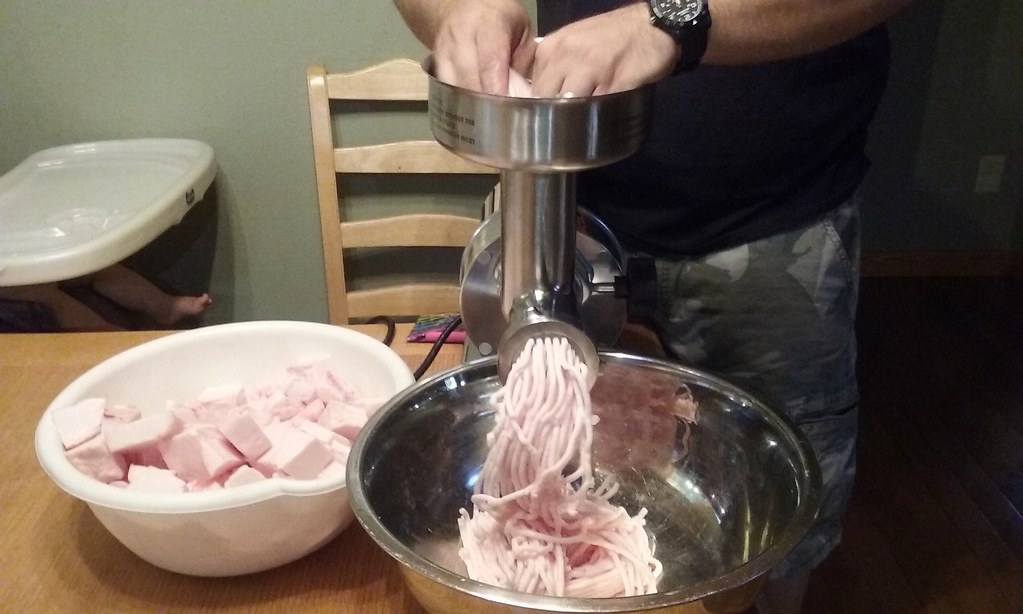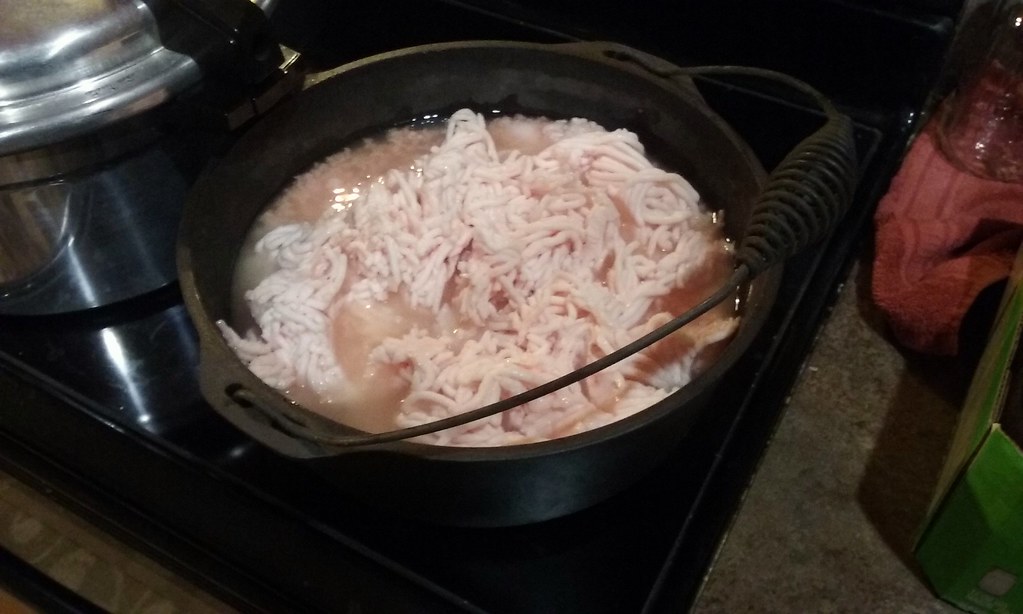Killer Kyle
Senior Member
I've done bear and hog both, but the process I've found to be most efficient is this:
Take the clean, white fat and cut it into chunks. I prefer to run it through a grinder. It renders quicker and more thoroughly this way. I put it in a cast iron pot and turn the stove on low heat. You don't want to cook it, just melt it. It may take a few hours, but the fat will slowly turn to liquid. At first, it's very cloudy but as you continue to render, it will clear up. I take a slotted spoon and scoop out any solids that are floating. Other impurities will have settled on the bottom. Everything else is pure bear grease. I've used a large syringe (for injecting turkeys) and drawn out the clear liquid and then deposited it into clean jars. It will set up over night and make a pure white grease like Crisco.
We keep ours in the freezer until we need a new jar, and just keep it in the fridge to use as needed. It makes awesome biscuits. I used bear grease to season my Blackstone. It's light and clean, and if you did it right, it has no off-putting flavor or odor. You can put your nose in the jar and can't smell a thing.
Hey W, question regarding rendering. I've read that the type of fat you collect makes a difference. I read that people collect the fluffy whiter belly fat. Is that about right? Let me also ask this. My bears are going to have to be quartered in the woods and packed out. In the order of work, would you recommend fitting the bear then removing the fat as priority #1 before skinning and making meat cuts? I've gotten dirt on bear and hog before in the process (I am definitely no pro!), but with washing and trimming the meat always turns out fine. I'm imagining there is absolutely no way to clean pure fat once it gets dirty. For the quartering process, I am thinking split up the middle, and roll bear to one side. Skin just under the hair down along the ribs, and then go back and carve off the fat. Then roll the bear to the other side, and repeat. Does that sound about right?




